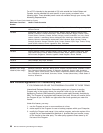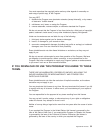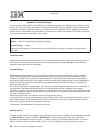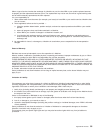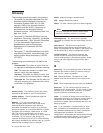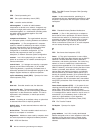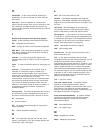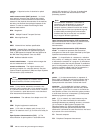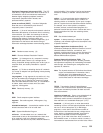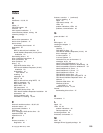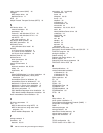
medium. A physical carrier of electrical or optical
energy.
media access control (MAC) protocol. In a local
area network, the part of the protocol that governs
communication on the transmission medium without
concern for the physical characteristics of the medium,
but taking into account the topological aspects of the
network, in order to enable the exchange of data
between data stations.
MHz. Megahertz.
MPTS. Multiple Protocol Transport Services.
MSB. Most significant bit.
N
NDIS. Network driver interface specification.
NetBIOS. Network Basic Input/Output System. An
operating system interface for application programs
used on IBM personal computers that are attached to
the IBM Token-Ring Network. See also BIOS.
NLM. NetWare loadable module.
network administrator. A person who manages the
use and maintenance of a network.
network architecture. The logical structure and
operating principles of a computer network. See also
systems network architecture (SNA) and Open Systems
Interconnection (OSI) architecture.
Note:
The operating principles of a network include
those of services, functions, and protocols.
node. (1) Any device, attached to a network, that
transmits and/or receives data. (2) An endpoint of a link,
or a junction common to two or more links in a network.
(3) In a network, a point where one or more functional
units interconnect transmission lines.
node address. The address of an adapter on a LAN.
O
OEM. Original equipment manufacturer.
open. (1) To make an adapter ready for use. (2) A
break in an electrical circuit. (3) To make a file ready for
use.
Open Systems Interconnection (OSI). (1) The
interconnection of open systems in accordance with
specific ISO standards. (2) The use of standardized
procedures to enable the interconnection of data
processing systems.
Note:
OSI architecture establishes a framework for
coordinating the development of current and
future standards for the interconnection of
computer systems. Network functions are divided
into seven layers. Each layer represents a group
of related data processing and communication
functions that can be carried out in a standard
way to support different applications.
Open Systems Interconnection (OSI) architecture.
Network architecture that adheres to a particular set of
ISO standards that relates to Open Systems
Interconnection.
Open Systems Interconnection (OSI) reference
model. A model that represents the hierarchical
arrangement of the seven layers described by the Open
Systems Interconnection architecture.
option. (1) A specification in a statement, a selection
from a menu, or a setting of a switch, that may be used
to influence the execution of a program. (2) A hardware
or software function that may be selected or enabled as
part of a configuration process. (3) A piece of hardware
(such as a network adapter) that can be installed in a
device to modify or enhance device function.
P
packet. (1) In data communication, a sequence of
binary digits, including data and control signals, that is
transmitted and switched as a composite whole. (2)
Synonymous with data frame. Contrast with frame.
parameter. (1) A variable that is given a constant
value for a specified application and that may denote
the application. (2) An item in a menu or for which the
user specifies a value or for which the system provides
a value when the menu is interpreted. (3) Data passed
between programs or procedures.
path. (1) In a network, any route between any two
nodes. (2) The route traversed by the information
exchanged between two attaching devices in a network.
(3) A command in IBM Personal Computer Disk
Operating System (PC DOS) and IBM Operating
System/2
®
(OS/2) that specifies directories to be
searched for commands or batch files that are not found
by a search of the current directory.
PC. Personal computer.
PCI. Peripheral Component Interconnect.
100 IBM 16/4 Token-Ring PCI Management Adapter



